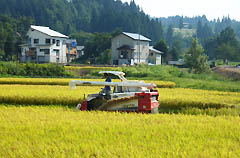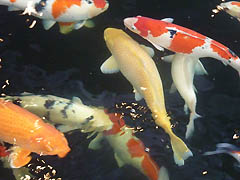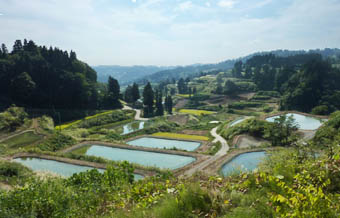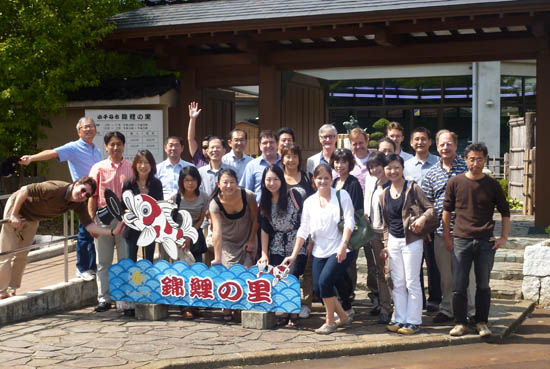

Nov. 1 - Today's guest blogger is Jennifer Clever from the Embassy's Agriculture Affairs Office, who talks about her office's recent agriculture field trip to Niigata Prefecture.
Jim
Agriculture Field Trip to Niigata

Niigata farmer harvesting rice
No matter where you are, the best way to learn about a country's agriculture is by going out to the fields. Recently, the U.S. Embassy Agriculture Affairs Section was fortunate to take some time away from busy Tokyo and travel to Niigata Prefecture just in time for this year's rice harvest.
On our way from Nagaoka Station to Uonuma, we found ourselves surrounded by rice paddy fields ready to be harvested. It is easy to see why Niigata is the largest rice producing prefecture in Japan. The town of Uonuma is said to grow the most delicious rice variety called "Koshi Hikari." While this rice variety is grown in other prefectures, we learned that Japanese consumers view Niigata's Koshi Hikari as the best of the best.
Of course, we had to test this theory and give Koshi Hikari a try. The result was a unanimous "Yum! (oishii!)" Niigata rice farmers should certainly be proud.
Did you know that the Koshi Hikari variety is now also grown in the state of California? Next time I travel to California I want to try it!

So many colorful kinds of koi!

Yamakoshi-mura's breathtaking landscape, with koi-breeding ponds
During our trip, we also met with "koi" farmers in Ojiya city. I had no idea there were so many species of koi and their great popularity as pets. There are about 200 beautiful koi species, most of them developed in Niigata Prefecture. Niigata grows about 70 percent of koi in Japan with about 600 breeders.
We learned that koi-keeping in the U.S. started in Hawaii around 2005 and then spread to California. Now people in about 20 U.S. states - including Massachusetts, Florida, and even Indiana - keep koi as pets.
Did you know that the water conditions in Niigata are said to be the same as in Hawaii? According to an Ojiya koi breeder, the temperature is usually stable and therefore it is a great place to keep koi.
We were also able to visit a koi museum and marvel at the wonderful array of koi colors. One of my favorite parts of our trip was our visit to Yamakoshi-mura where we took in the breathtaking landscape of koi ponds and rice paddies.
While admiring the view, I learned a new phrase from my Japanese colleagues: "Kimochi ii" (a good feeling). Indeed, the peaceful countryside scenery renewed our spirits before we headed back to the city.
- Jennifer Clever

The U.S. Embassy's Agriculture Section standing outside the Koi Museum - that's me in the front row, third from right.
Follow the Agriculture Affairs Office on Twitter: http://twitter.com/#!/USDAJapan
Comments Welcome!